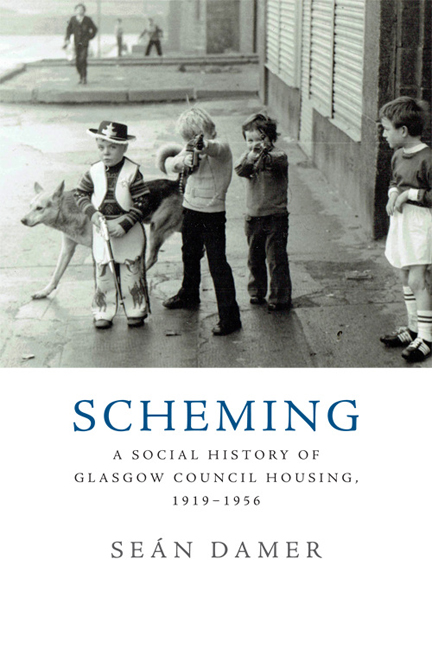Book contents
- Frontmatter
- Dedication
- Contents
- List of Tables and Figures
- Acknowledgements
- Preface
- 1 Introduction
- 2 Mosspark: Homes Fit for Heroes?
- 3 Hamiltonhill: A Pioneering Slum-Clearance Scheme
- 4 West Drumoyne: Blue-Collarland
- 5 Blackhill: Out of the Slums
- 6 Craigbank: Amateur Dramatics?
- 7 South Pollok: ‘The Bundy’
- 8 Alarums and Excursions
- Appendix 1 Balloting for a Council House
- Appendix 2 Methodological Notes
- Bibliography
- Index
4 - West Drumoyne: Blue-Collarland
Published online by Cambridge University Press: 12 November 2019
- Frontmatter
- Dedication
- Contents
- List of Tables and Figures
- Acknowledgements
- Preface
- 1 Introduction
- 2 Mosspark: Homes Fit for Heroes?
- 3 Hamiltonhill: A Pioneering Slum-Clearance Scheme
- 4 West Drumoyne: Blue-Collarland
- 5 Blackhill: Out of the Slums
- 6 Craigbank: Amateur Dramatics?
- 7 South Pollok: ‘The Bundy’
- 8 Alarums and Excursions
- Appendix 1 Balloting for a Council House
- Appendix 2 Methodological Notes
- Bibliography
- Index
Summary
The Legislation
West Drumoyne was built under the provisions of John Wheatley's 1924 Housing Act. This Act re-introduced the principle of state subsidy of council housing, and was aimed squarely at those ‘general needs’ of the working class totally untouched by the 1919 Act. Its provisions ensured the acceleration of the house-building programme both nationally and in Glasgow. But even with design criteria markedly less generous that those of the 1919 Act, the nature of the rigid subsidy system resulted in rent levels which were still out of reach of the majority of workers.
The problem which not even Wheatley had resolved was a differential rent policy, that is, an economic strategy for constructing adequate houses at rents which the different sections of the working class could afford. The old question of not being seen to subsidise the rents of the poor out of the rents of more affluent remained unanswered. In Glasgow, the council housing which had been constructed by the mid-1920s was élite housing for professionals, white-collar workers and the odd labour aristocrat on the one hand, and a very small amount of basic housing for slum-dwellers on the other. This still left unresolved the problem of how to house the intermediate – and by far the largest – category of tenant: the mass of workers housed in overcrowded tenements which were not technical slums. At this late date, 1924, and indeed until 1928, there was no such thing as ‘Intermediate’ council housing in Glasgow. The failure of government legislation to meet the housing needs of these workers resulted in considerable agitation in Glasgow on the part of the ILP for a category of scheme midway between the low rentals of designated ‘Slum-Clearance’ schemes like Hamiltonhill, and the very much higher rents in ‘Ordinary’ schemes like Mosspark.
The outcome was the conscious creation of a new, third, category of housing scheme, the ‘Intermediate’. The first of these schemes were subsidised under the Wheatley Act, others under subsequent interwar legislation. Other local authorities solved the problem through a differential rents policy, thus maintaining a two-tier system. This, of course, meant that ratepayers and better-off tenants of council housing schemes were subsidising those on lower rents.
- Type
- Chapter
- Information
- SchemingA Social History of Glasgow Council Housing, 1919-1956, pp. 56 - 72Publisher: Edinburgh University PressPrint publication year: 2017



